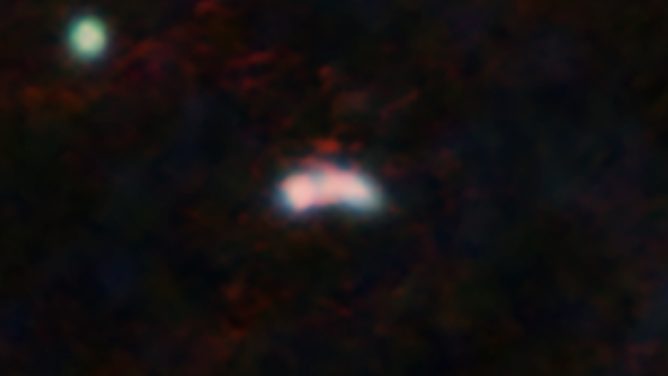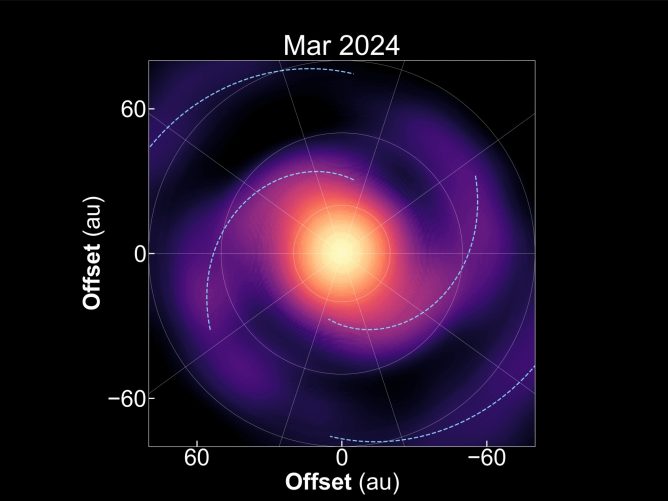On April 30, The Atacama Large Millimeter/submillimeter Array, a gigantic radio telescope project under construction in northern Chile, reached a major milestone when two antennas were linked together as an interferometer and successfully received radio waves from an astronomical source.
At the Operations Support Facility (OSF) at an altitude of 2900 meters, radio waves emitted by the planet Mars were collected by two 12-meter antennas and interference fringes were successfully obtained (in technical term, this is called “First Fringes”). These two antennas were manufactured by Japan and North America separately. This achievement proved that the antennas and the related hardware components can work properly as an “interferometer”.
Satoru Iguchi, ALMA-J Project Manager at the National Astronomical Observatory of Japan, says with excitement, “To obtain the first fringe, they used a parabolic antenna manufactured by Japan and a receiver evaluated by Taiwan. It’s especially gratifying that the equipment provided by East Asia played an important role in this major milestone. We made a big step toward the success of ALMA”.
“This is another important step forward for ALMA as it proves that the various hardware components can work well together. The efforts of all the staff involved in this first antenna integration show the strength of our global collaboration and give much confidence that we can get to full operations with ALMA as one great astronomical observatory,” says Thijs de Graauw, ALMA Director.
This interferometer test was conducted at 2900 m a.s.l. using two antennas. In the near future, these antennas will be operated as part of ALMA’s 66 antennas at the ALMA Array Operations Site (AOS) at 5000 m a.s.l, which is the best location on Earth for astronomical observation. As the world’s most advanced radio telescope, ALMA will explore the mysteries of the universe.










